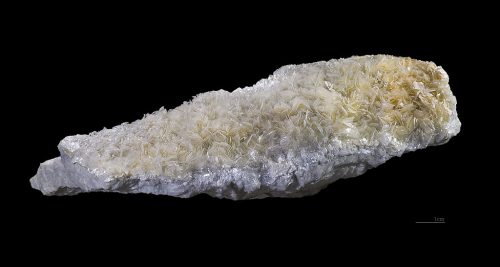
No hype, is Talc powder bad for me?
I know there are lots of articles out there and at times there seems to be a great deal of hype and blustering around talc powder, alarmist and extremist. I try to sift through it and present you with information so you can make your own decision.
Talc powder has been around and in use for a very long time and has been widely used for a very long time. It is found all around the globe in veins of deposits. It is a mineral that was formed when magmatic rock, rich in magnesium, experienced a hydrothermal reaction. When liquid rock meets super heated water and pressure? Transformation! Talc a very soft mineral. In fact, it is the softest measuring, only 1 on the mohs scale. You can flake it away with your fingernail; so, you can imagine, it doesn’t take much to mine and gather talc powder. However, there are some things to note here.
Purity
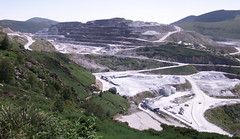 Mineral deposits are rarely pure. There is usually some cross-contamination from other deposits and minerals seeping over. For example, many of the talc veins run very close to asbestos, a known carcinogen. Now, not all veins do and there is pure talc, you just need to trust that the suppliers have properly processed and tested the purity. Call me a cynic, but I think this might be problematic.
Mineral deposits are rarely pure. There is usually some cross-contamination from other deposits and minerals seeping over. For example, many of the talc veins run very close to asbestos, a known carcinogen. Now, not all veins do and there is pure talc, you just need to trust that the suppliers have properly processed and tested the purity. Call me a cynic, but I think this might be problematic.
Cancer link and Pulmonary Disease
In all fairness to talc, there is no conclusive evidence linking pure talc to cancer. Last time I checked the American Cancer Society page on talc, there were no conclusions on links to cancer when the talc did not have asbestos. OK, but you can make the leap: asbestos might be present if the talc was not tested properly.
Having said that, I will note one major US brand has been hit with several major lawsuits sighting a direct link to their powder (talc) and ovarian cancer. I have not read the cases all the way through but the company and their supplier were fined. This makes me think there must be something amiss. Like some testing was done wrong or ignored. They lost three major cases (and more are on the way) but recently won one so you be the judge. You can read the cases for yourself and let me know what you find. Seems to me that each time the winner declared the science was on their side!?
As far as lung disease, miners and millers are the most at risk because they can be exposed to trace amounts of carcinogens when they handle the material in its raw, unrefined state. Miners are also exposed to radon so it’s difficult to find a conclusive, direct link. Also, due to it’s ultra fine powder it is very easy to unintentionally inhale talc powder. Talc powder in the lungs can cause pulmonary disease. This is the key reason that most if not all doctors caution it’s use around infants.
Sustainability
Talc powder is a mineral that does have a finite supply. Any item that is mined or pumped from the earth is not sustainable, plain and simple. The geothermal reactions that created the deposits happened long before we showed up and they aren’t going to be repeated. Once it runs out, it is gone forever.
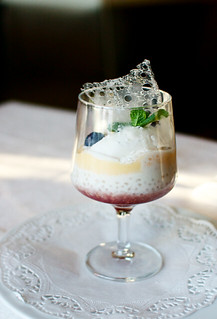 Naturally designed for living organisms
Naturally designed for living organisms
I don’t know how else to say it: Our bodies are not designed to process talc powder. It is not a mineral that has any advantages to the human organism. It is not digestible or biodegradable so if it gets in, there is no way to convert talc powder into anything usable for the body. So if it cannot be converted what’s it going to do. Perhaps your body, with it’s natural defenders, may be able to flush it out somehow, but what if some gets stuck. On a molecular level it would be like inviting an invader into your home that just stays and festers…forever. You hope it never causes trouble, but there is always a chance.
So why use it when you can use plant powders to do the same thing? This is my biggest hang up about talc powder; it offers no additional value, it is not sustainable, it acts as a foreign invader if it ever gets inside the body. We know that plant starches can do the job of helping to keep us dry and cool almost as well. Our bodies know what to do with plant starches and we will either use it to our advantage, convert it to something we need, or purge it out. So why risk using talc powder? To save a few bucks?
What would you rather use?
For those of us at Tres Spa, we would much rather use a pure botanical solution. One that the body naturally knows what to do with.

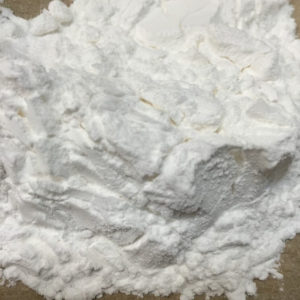 The whole purpose of any powder is to cover the skin with a light silky coating. The goal is to create a protective layer and to wick water away from the surface. This is how powders work no matter what their chemical structure is. But they don’t all work exactly the same and some of them have some pretty big caution flags for personal care use.
The whole purpose of any powder is to cover the skin with a light silky coating. The goal is to create a protective layer and to wick water away from the surface. This is how powders work no matter what their chemical structure is. But they don’t all work exactly the same and some of them have some pretty big caution flags for personal care use.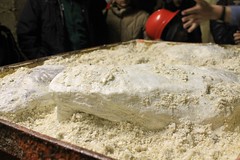 Traditionally, powders were made with mined minerals or clays. The most common mined mineral is Talc and you can find the use far and wide from industrial to pharmaceutical to cosmetic. Talc is hydrated magnesium silicate, a very fine substance and rates only a 1 on the MOHS scale of hardness for minerals. That means it is so soft you can actually flake it with your finger nail. It can be found in veins all over the globe and was formed hydrothermal alteration of magnesium-rich magmatic rocks. The mines are plentiful and it’s fairly cheap raw material. It also has a shelf life of eternity. All those factors make it very appealing for manufacturing. Unfortunately, it is usually found near asbestos veins as well but not always so not all talc contains trace amounts of asbestos. And recently there have been a few lawsuits citing Talc as a leading cause of cervical cancer. There are also some studies that link pulmonary disease with talc which has caused many pediatricians to recommend against using it for children.
Traditionally, powders were made with mined minerals or clays. The most common mined mineral is Talc and you can find the use far and wide from industrial to pharmaceutical to cosmetic. Talc is hydrated magnesium silicate, a very fine substance and rates only a 1 on the MOHS scale of hardness for minerals. That means it is so soft you can actually flake it with your finger nail. It can be found in veins all over the globe and was formed hydrothermal alteration of magnesium-rich magmatic rocks. The mines are plentiful and it’s fairly cheap raw material. It also has a shelf life of eternity. All those factors make it very appealing for manufacturing. Unfortunately, it is usually found near asbestos veins as well but not always so not all talc contains trace amounts of asbestos. And recently there have been a few lawsuits citing Talc as a leading cause of cervical cancer. There are also some studies that link pulmonary disease with talc which has caused many pediatricians to recommend against using it for children.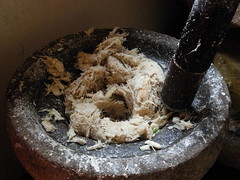 More recent in the skin care world and less common are powders made entirely from plant starches. Personally I think it’s pretty fantastic how starch is made. Plant sources for starch powder can be anything from tuberous plants to seeded ones. The most common plants are corn, wheat, and rice as a seed version. Less common would be coconut, beans and peas. Arrowroot, potato, and tapioca are all examples of starchy tuber plants. You can read more about how the starches we use in Très Spa formulations are created:
More recent in the skin care world and less common are powders made entirely from plant starches. Personally I think it’s pretty fantastic how starch is made. Plant sources for starch powder can be anything from tuberous plants to seeded ones. The most common plants are corn, wheat, and rice as a seed version. Less common would be coconut, beans and peas. Arrowroot, potato, and tapioca are all examples of starchy tuber plants. You can read more about how the starches we use in Très Spa formulations are created: 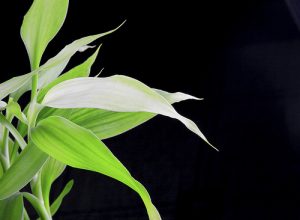 What it takes to make a purely natural powder
What it takes to make a purely natural powder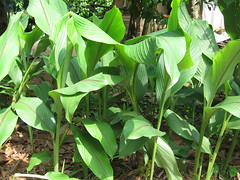
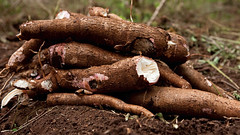

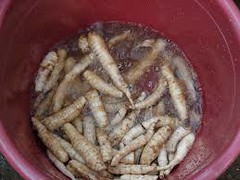
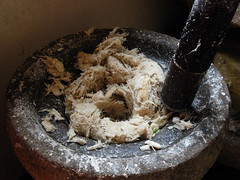

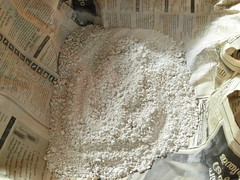

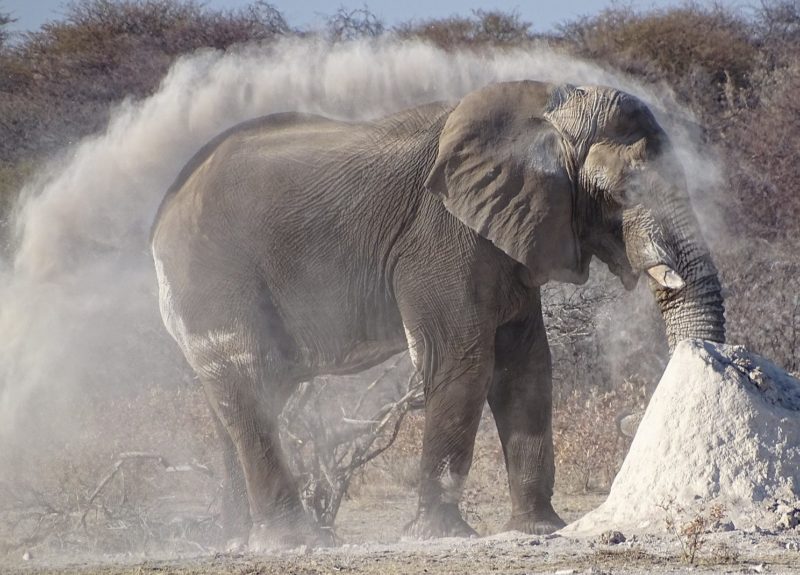
 The vast majority of commercial powders on the market today are made in whole or in part by Talc.
The vast majority of commercial powders on the market today are made in whole or in part by Talc.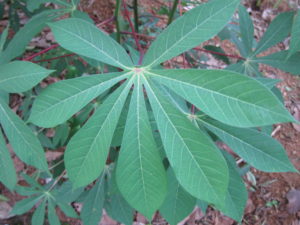 Personally I don’t like to gamble with life so I never bothered with Talc. When I formulate I like to think in terms of living in harmony with the world as much as possible. My first preference is to look for renewable ingredients that are sustainable. You can grow and harvest and re-grow plants but once you mine a mineral it is gone (not to mention the scars left on the land behind). That is why the powders we make at Très Spa are 100% botanical with a long history of human safety and no “suspicious” findings. It’s more expensive and it is more challenging to formulate but we feel you are worth it. So if your Tres Spa powder doesn’t feel like talc, there is a good reason, it’s because it isn’t. It is water soluble and made from the finely ground plants that are used in food you eat.
Personally I don’t like to gamble with life so I never bothered with Talc. When I formulate I like to think in terms of living in harmony with the world as much as possible. My first preference is to look for renewable ingredients that are sustainable. You can grow and harvest and re-grow plants but once you mine a mineral it is gone (not to mention the scars left on the land behind). That is why the powders we make at Très Spa are 100% botanical with a long history of human safety and no “suspicious” findings. It’s more expensive and it is more challenging to formulate but we feel you are worth it. So if your Tres Spa powder doesn’t feel like talc, there is a good reason, it’s because it isn’t. It is water soluble and made from the finely ground plants that are used in food you eat. We have all seen the labels and the marketing material stating that a product is hypoallergenic. What makes it so, what does that mean, and why say it? It’s a marvelous word signifying the product is less apt to cause an allergic reaction. It sounds so clinical, official and sterile. Like nothing bad could happen to you if you used this product. The word hypoallergenic makes you think that this is skincare you can trust.
We have all seen the labels and the marketing material stating that a product is hypoallergenic. What makes it so, what does that mean, and why say it? It’s a marvelous word signifying the product is less apt to cause an allergic reaction. It sounds so clinical, official and sterile. Like nothing bad could happen to you if you used this product. The word hypoallergenic makes you think that this is skincare you can trust. cosmetics. You make a line of foundation make up. You have a long list of ingredient compounds that go into this foundation product. Say you start getting feedback that there is a part of the population that is having an allergic reaction (usually slight redness, heat, or itchiness). You want happy customers! So you go back to your lab and you isolate the compound that may be the perpetrator and you either change your formula a bit and re release as “Re Formulated” or you run a new line with a new set of compounds and call it “Hypoallergenic”.
cosmetics. You make a line of foundation make up. You have a long list of ingredient compounds that go into this foundation product. Say you start getting feedback that there is a part of the population that is having an allergic reaction (usually slight redness, heat, or itchiness). You want happy customers! So you go back to your lab and you isolate the compound that may be the perpetrator and you either change your formula a bit and re release as “Re Formulated” or you run a new line with a new set of compounds and call it “Hypoallergenic”. With Très Spa, we feel natural plant based is the best for you and for the planet. So we create products in Harmony with Nature and we disclose all of the ingredients on our website as well as our labels. Très Spa products serve a broad spectrum of customers and some that suffer from allergies to various ingredients as well as those with particularly challenging skin conditions like psoriasis and eczema. So even though Très Spa products could be considered hypoallergenic, we choose not to actively market that. We feel it is far better to use natural and botanical ingredients in our formulations and disclose what each ingredient is then let you, the consumer, choose what works best for you. After all, you know what you are allergic to.
With Très Spa, we feel natural plant based is the best for you and for the planet. So we create products in Harmony with Nature and we disclose all of the ingredients on our website as well as our labels. Très Spa products serve a broad spectrum of customers and some that suffer from allergies to various ingredients as well as those with particularly challenging skin conditions like psoriasis and eczema. So even though Très Spa products could be considered hypoallergenic, we choose not to actively market that. We feel it is far better to use natural and botanical ingredients in our formulations and disclose what each ingredient is then let you, the consumer, choose what works best for you. After all, you know what you are allergic to.